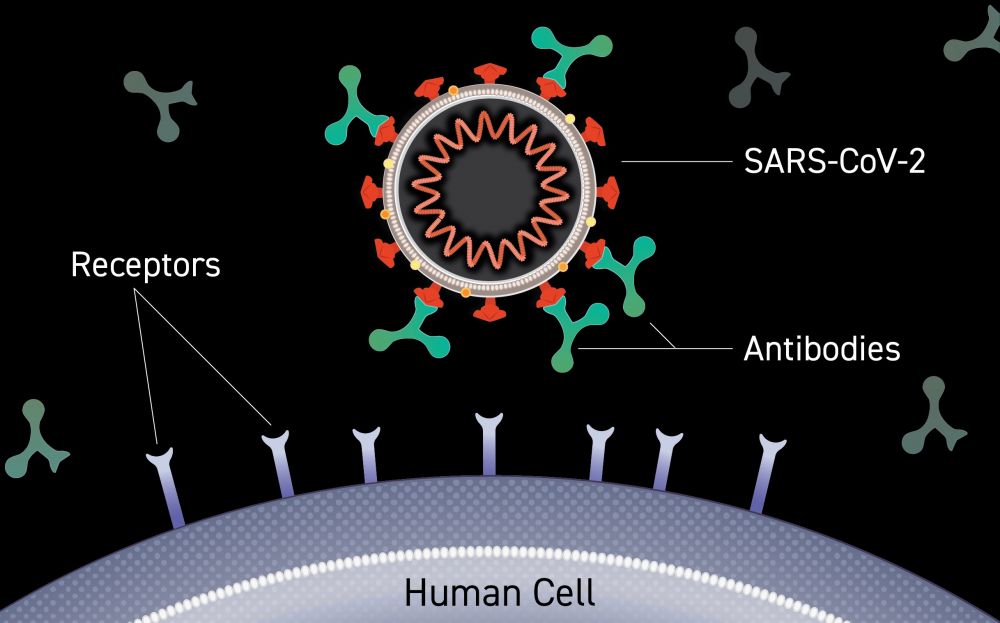
Coronavirus: Study finds further door opener into the cell

- 21-10-2020, 14:04
INA – Sources: Medical Xpress
The coronavirus SARS-CoV-2 is known to infect cells via the receptor ACE2. An international research team under German-Finnish coordination has now identified neuropilin-1 as a factor that can facilitate SARS-CoV-2 entry into the cells' interior. Neuropilin-1 is localized in the respiratory and olfactory epithelia, which could be a strategically important localization to contribute to SARS-CoV-2 infectivity and spreading. Experts from the German Center for Neurodegenerative Diseases (DZNE), Technical University of Munich, University Medical Center Goettingen, University of Helsinki and other research institutions now published their findings in the journal Science.
The coronavirus SARS-CoV-2 can affect various organs such as the lung and kidneys and also trigger neurological symptoms, including a temporary loss of smell and taste. The spectrum of symptoms of the associated disease—known as COVID-19—is therefore quite complex. A related virus, SARS-CoV, led to a much smaller outbreak in 2003, possibly because the infection was limited to the lower respiratory system, making the virus less transmissible. SARS-CoV-2, in contrast, additionally infects the upper respiratory system including the nasal mucosa and, in consequence, spreads rapidly through active viral shedding, e.g. when sneezing.
Door opener to the cell
Tissue tropism reflects the ability of a virus to infect specific cell types in different organs. It is determined by the availability of docking sites, so-called receptors, on the surface of cells. These allow docking to and penetration into the cells. "The starting point of our study was the question why SARS-CoV and SARS-CoV-2 that both use ACE2 as a receptor cause different diseases," explained Mikael Simons, a research group leader at the DZNE's Munich site and professor of molecular neurobiology at the Technical University of Munich, whose team was involved in the current studies, together with Giuseppe Balistreri's group at the University of Helsinki.
To understand how these differences in tissue tropisms can be explained, the researchers took a look at the viral "spike proteins" that are essential for virus entry. "The SARS-CoV-2 spike protein differs from its older relative by the insertion of a furin cleavage site," explained Simons. "Similar sequences are found in the spike proteins of many other highly pathogenic human viruses. When we realized that this furin cleavage site is present in the SARS-CoV-2 spike protein, we thought that this might lead us to the answer." When proteins are cleaved by furin, a specific amino acid sequence becomes exposed at its cleaved end. Such furin cleaved substrates have a characteristic pattern that is known to bind to neuropilins at the cell surface.
Trump's imposing tariffs on China is a win-win for it, says BBC
- International
- 09:30
Gaza: New death toll from the Zionist bombardment
- International
- 05:00
Al-Sistani: Tomorrow, the 29th of Ramadan
- Local
- 25/03/29
Al-Amiri warns of any war between Iran and the US
- politics
- 25/04/01
ChatGPT temporarily down due to pressure from cartoon trend
- Articles
- 25/03/30












